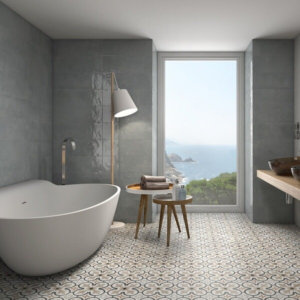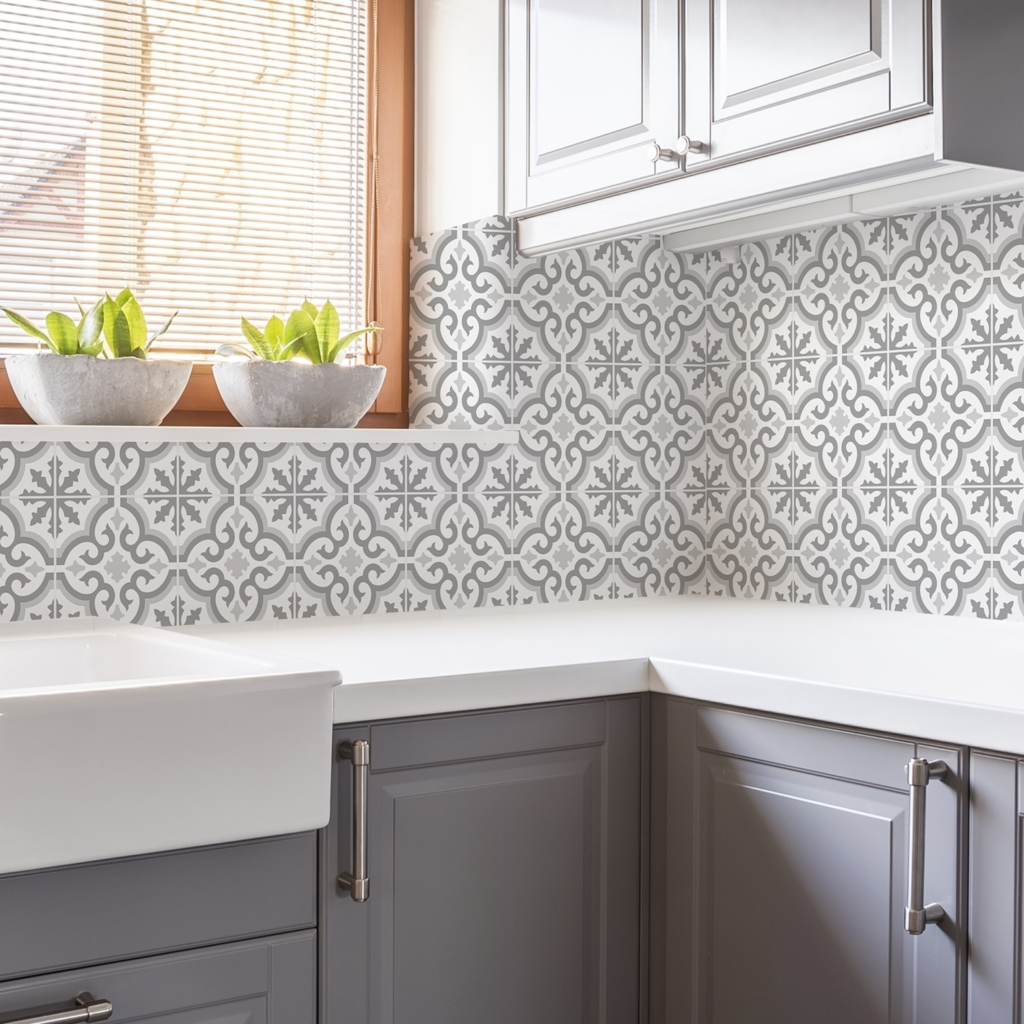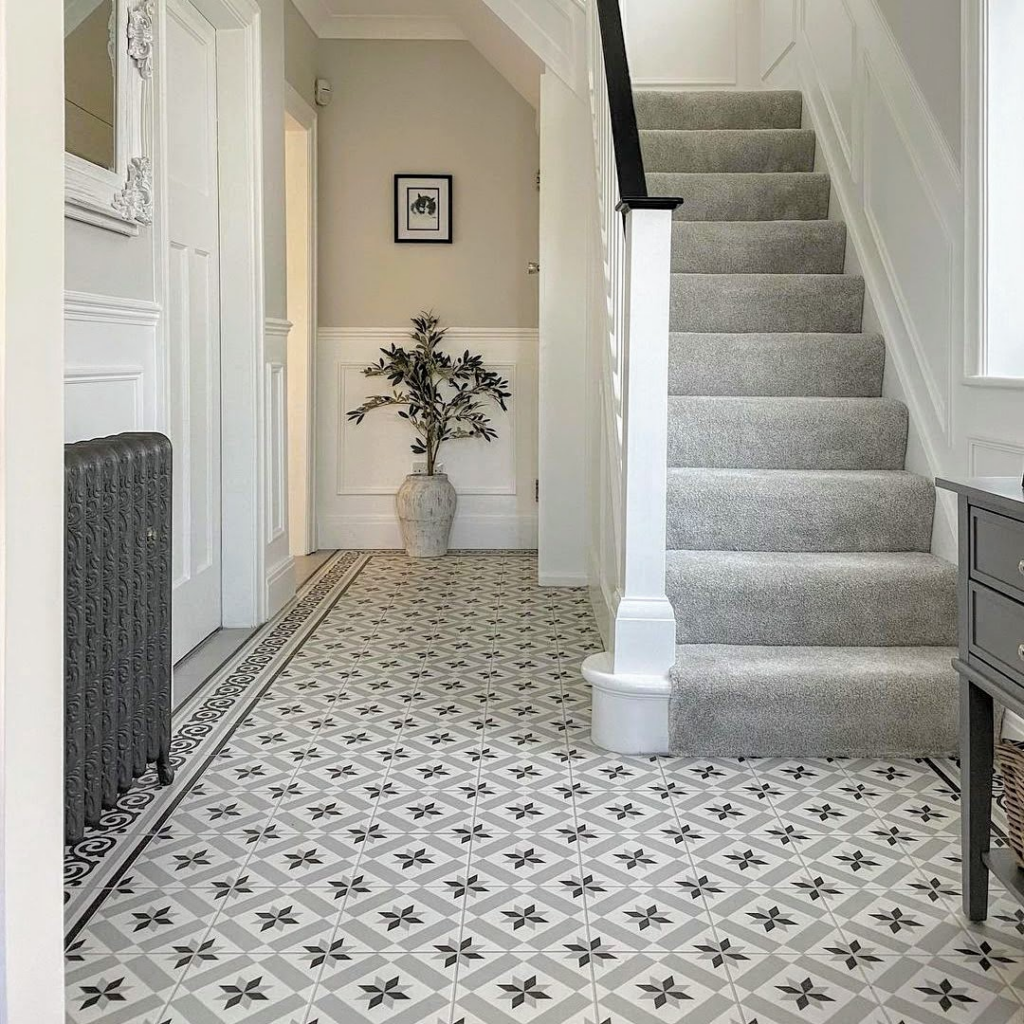What does grey mean?

Grey boasts neutrality and you can really achieve a minimalist feel using grey Moroccan tiles. Described as a utilitarian and functional colour, across the scales they just work, are relatable and although can seem plain, give a sense of belonging and acceptance.
Just as it presents itself in a very formal yet open way, it is not that grey does not draw its own attention, instead it aims to provide the blank canvas for other elements and items to really pop. Its the separation from others, and its overarching distinctness that helps foster this idea of inclusion.
Grey really is a colour that captures a neutral feeling of broadness and ultimately sits in the back, widening the space to allow for more specific items to take center stage.

Its lack of opinion makes it very versatile, giving you the ability to mould it as you see fit. It works perfectly when contrasting and almost handling different colours, products and items.
But take advantage of its neutrality to draw out feelings of security, comfort and calmness. The scale towards white always projects a sense of purity, whilst lighter shades of grey aim to break down barriers and give the mental space to openly and honestly communicate your thoughts and feelings.
How to use grey Moroccan tiles?
Now as already mentioned, as grey tiles really sit in the background, very reserved and almost unnoticed there are really a number of ways you apply them to maximise their effect. With most approaches you can achieve a minimal, modern effect. Think of grey as having a holistic effect, it is your blank canvas, so technically it will fill a space and really give a grounded, established look.

Grey very easily compliments white, acting as a nice separator and divider, not just between colours and items, but also for rooms like the kitchen.
You can really cordon off spaces and the feelings of those spaces with subtle shades, without being too provocative or in your face – perfect if you are looking for a very minimalist, functional look.
The brilliant thing about that is that light grey Moroccan tiles will work, whether it is in the kitchen, hallway, bedroom or bathroom, and with lighter shades they greatly encourage a sense of size. Too many splashes of grey though can almost be too bleak, static and blunt to the eye, that is why you would really want to bring in the perks and / or the slight colour changes.
In this scenario, where you want to go from block grey Moroccan tile, then you really have the option of splashes of grey, rows, columns or even whole walls of grey. But what is commonplace is to have dedicated spaces and areas, again speaking to functionality, to separate spaces and to signal transitions and change. Do not think that dark grey tones are turn offs, it is quite the opposite, as long as you are controlled and manage the quantity of grey – it will still work.

Now to really bring grey to life you’ll need to turn things up a bit, especially if you want the Moroccan grey tiles to be the center piece.
In order to do this you want grey pattern Moroccan tiles with a contrasting or complimentary colours e.g. white and black.
Neutral and functional as it may be, adding a good consistent or even inconsistent pattern to Moroccan tiles always creates a sense of character which opens the door for you to explore different moods e.g. playfulness, formal, monotone etc. This is what really helps to lift the tiles off the ground or the walls – making them very attractive.
Keep in mind, as mentioned before grey is functional and utilitarian so too much can be overbearing, result in you getting lost, and just a real turn off for the experience. But a section, floor or area is just enough to capture attention and intrigue, whilst till giving you the ability to make other things pop.
Remember, Moroccan style tiles in grey by nature are complimentary and very much like a blank sheet of paper. Whilst patterns grey tiles always add character, they still are a huge contributor and facilitator to the experience you want to create.
Examples of grey Moroccan tile




